Stepping onto the pickleball court isn’t just about having a solid backhand or mastering the perfect serve; it’s also about the mental game. Competitive pickleball players know that what’s happening in their head can be just as crucial as their physical prowess. Mental preparation strategies can make or break their game.
Whether they’re facing a tough opponent or battling their own nerves, having the right mental tools is key. From visualization techniques to mindfulness practices, there’s a whole playbook of strategies that can help them stay focused, confident, and ready for whatever comes their way. Let’s dive into some of these game-changing mental preparation strategies that could set them up for success on the court.
Understanding the Mental Game in Competitive Pickleball
In the world of competitive pickleball, mastering the mental game is as crucial as honing one’s physical skills. Players often find that their mental state can significantly impact their performance. Whether it’s managing pre-match nerves or staying focused during a heated exchange, the right mindset can be the difference between winning and losing.
A primary aspect of the mental game in pickleball is confidence. Players with a strong belief in their abilities tend to perform better under pressure. Confidence isn’t just about believing one can win; it’s also about trusting in one’s training, strategies, and decision-making on the court. Building this confidence requires consistent practice, self-reflection, and a positive attitude towards improvement.
Another vital component is focus. Pickleball matches can be long and physically demanding, but it’s the mental stamina that often decides the outcome. Distractions, both internal like doubt and external such as crowd noise, can derail a player’s game. Successful competitors develop strategies to maintain their concentration, such as focusing on their breathing, utilizing positive self-talk, or visualizing successful shots.
Emotional control plays a significant role as well. The ability to manage one’s emotions — including frustration, anger, and disappointment — distinguishes top performers from the rest. Losing a point or facing a tough opponent can test a player’s emotional resilience. Developing techniques to stay calm and composed, even when the match isn’t going as planned, is essential for maintaining a competitive edge.
Resilience, or the capacity to bounce back from setbacks, is another distinguishing feature of mentally strong players. In pickleball, as in life, things don’t always go according to plan. Matches can swing dramatically, and a lead can evaporate quickly. Competitors with high resilience don’t dwell on mistakes or losses. Instead, they learn from them, adjust their strategies, and approach each point as a new opportunity.
To foster these mental skills, many players turn to specific strategies. Visualization, where one imagines executing perfect shots and winning points, is a powerful tool for building confidence and focus. Mindfulness and meditation practices can help with emotional control by teaching players to stay present and not get overwhelmed by their thoughts or the score. Journaling is another technique used to track progress, set goals, and reflect on both the mental and physical aspects of their game.
Setting Clear Goals and Objectives

In the realm of competitive pickleball, understanding the necessity of setting clear goals and objectives can’t be overstated. Players often find that articulating specific outcomes they aspire to achieve—whether it’s improving their serve, mastering a new shot, or winning a local tournament—serves as a powerful motivator and a road map directing their training efforts. It’s not just about laying down ambitions; it’s about structuring a pathway to success, step by manageable step.
Goal setting in pickleball adopts a dual approach: short-term goals and long-term goals. Short-term goals act as incremental milestones that pave the way toward bigger achievements, encouraging players to focus on immediate areas for improvement. These might include enhancing shot accuracy, increasing agility on the court, or building up stamina. Long-term goals, on the other hand, require a broader vision, such as ranking in regional competitions, securing a certain win-loss record, or even aspiring to play at a professional level.
Here’s a simple breakdown of the two types of goals:
| Goal Type | Purpose |
|---|---|
| Short-term Goals | Target immediate improvements and tactical adjustments. |
| Long-term Goals | Set the overall direction and larger achievements in sight. |
To ensure that goals are both motivating and reachable, they must be S.M.A.R.T: Specific, Measurable, Achievable, Relevant, and Time-Bound. For instance, instead of a vague ambition like “get better at pickleball,” a S.M.A.R.T goal would be “to improve my serve accuracy to 80% over the next three months.”
Effective goal setting involves a measure of self-reflection and honesty. Players should consider their strengths, weaknesses, and the resources at their disposal. This contemplative process not only guides players in selecting meaningful objectives but also in recognizing the personal hurdles they must overcome to achieve them.
Moreover, it’s crucial for players to remain adaptable in their pursuit of goals. Circumstances may change, progress might stall, and objectives may need reevaluation. Flexibility allows players to adjust their strategies, refocus their efforts, and stay committed to their growth in the sport.
Visualizing Success: The Power of Mental Imagery
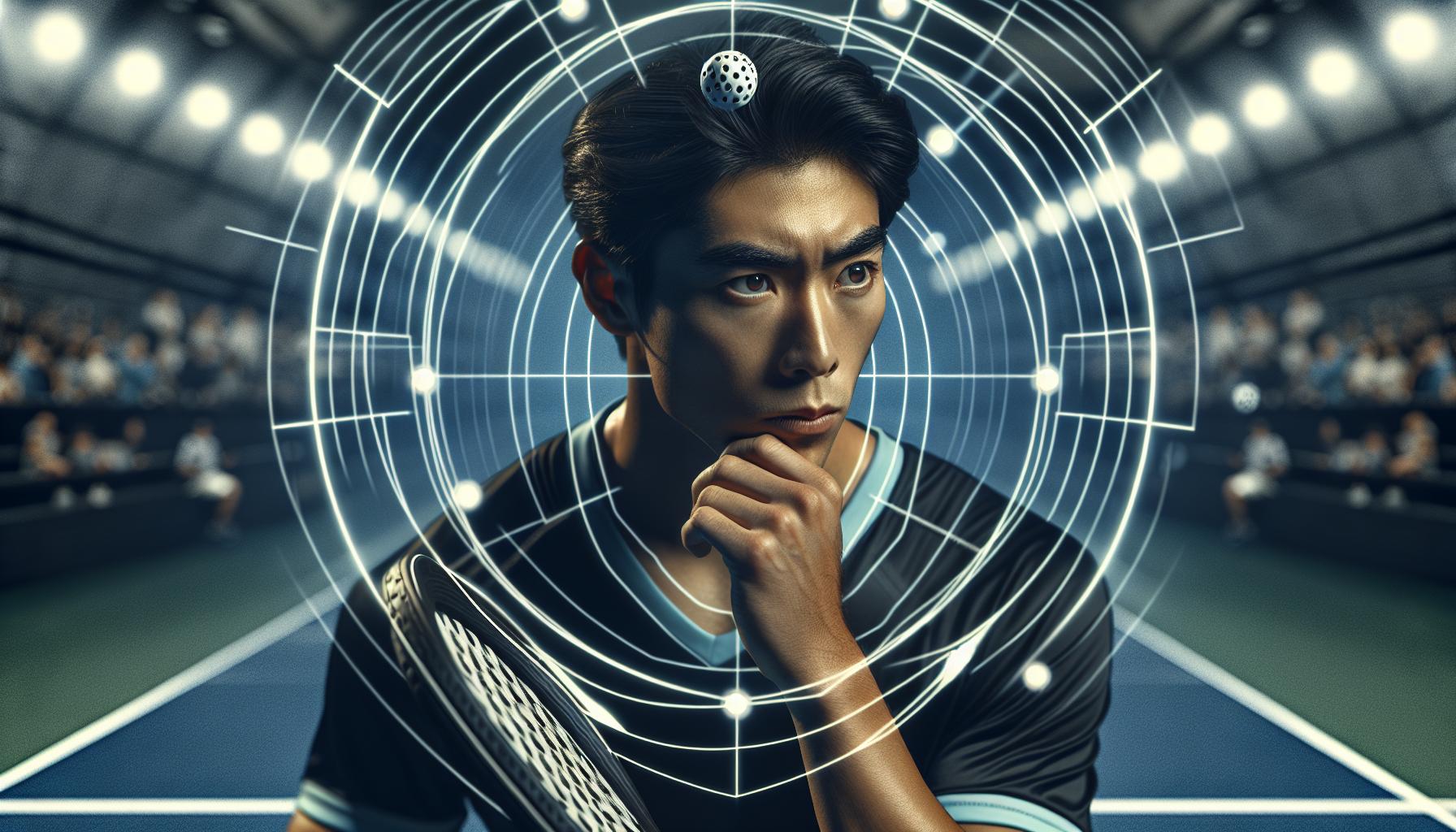
Mental imagery, often known as visualization, is a key technique in the toolbox of a competitive pickleball player. It’s the practice of creating vivid, detailed mental pictures of successful outcomes on the court, which can significantly enhance a player’s performance. By visualizing successful shots, strategic plays, and even the victory moment, players can mentally and emotionally prepare themselves for the challenges ahead.
The effectiveness of mental imagery lies in its ability to simulate real-life experiences in the mind, triggering the same neurological pathways used during actual play. This “mental rehearsal” allows players to sharpen their skills off the court, boosting their confidence and readiness when they step into the game.
Key Components of Effective Visualization:
- Specificity: The more detailed the visualization, the better. Players should imagine the environment, their movements, their opponents, and even the crowd’s reactions.
- Emotion: Incorporating feelings of success, excitement, and achievement into the visualization process can enhance its impact on performance.
- Frequency: Regular practice of visualization drills strengthens its effects. Top players often dedicate a portion of their training time to mental imagery exercises.
Research Highlights:
Studies on sports psychology have shown a positive correlation between visualization techniques and performance improvement. For instance, athletes who engage in mental imagery exercises report higher levels of confidence and a better ability to handle pressure during competitive situations.
| Benefit | Percentage of Athletes Reported |
|---|---|
| Improved Focus | 76% |
| Increased Confidence | 84% |
| Better Stress Management | 68% |
Integrating visualization into training schedules can be straightforward. It can be as simple as spending a few minutes before practice imagining successfully executing difficult shots or as in-depth as conducting dedicated visualization sessions with a sports psychologist. The key is consistency and a clear focus on positive outcomes.
Visualization practices also extend beyond the court. Many successful players incorporate these techniques into their everyday routines, visualizing not only specific matches but also broader goals, such as winning a championship or achieving a personal best. This holistic approach to visualization reinforces their overall mindset and prepares them mentally for a wide range of scenarios.
Developing a Pre-Game Routine
A solid pre-game routine is crucial for pickleball players looking to enhance their mental game. Such routines are designed to help athletes enter a state of heightened focus and confidence before stepping onto the court. By developing a consistent set of activities leading up to a game, players can significantly reduce pre-match anxieties and improve their performance.
Firstly, it’s essential to understand that a pre-game routine starts well before the day of the match. Players should begin by focusing on their physical health, ensuring they’re getting adequate sleep and maintaining a balanced diet. Hydration plays a pivotal role in mental clarity, so keeping water intake high is also critical.
On the day of the match, players should follow a personalized checklist that gears them up mentally and physically. This checklist might include:
- Listening to music to boost emotional energy.
- Meditative breathing to calm nerves.
- Dynamic stretching to prepare the body for vigorous activity.
- Visualization of successful plays and outcomes.
- Positive self-talk to build confidence.
Visualization is a powerful tool that deserves a detailed mention. Players should spend a few minutes in solitude, picturing themselves executing perfect shots, moving fluidly across the court, and responding to their opponent’s actions with confidence. They should imagine the feel of the paddle in their hands, the sounds of the game, and even the satisfaction of scoring points. This method not only prepares the mind for the game but also seeds positive outcomes in the player’s subconscious.
Incorporating these elements into a pre-game routine builds a Routine of Success. The routine becomes a signal to the brain that it’s time to perform at its peak. It’s a moment for players to center themselves, focusing solely on the game ahead and pushing aside any external worries or distractions.
Furthermore, the importance of mental rehearsal in a pre-game routine cannot be overstated. Just as physical practice builds muscle memory, mental rehearsal strengthens neural pathways associated with successful execution of skills under pressure. Players should mentally walk through different scenarios they might face during the match, planning their strategies and reactions. This prepares them for the unpredictability of competitive play, ensuring they’re less likely to be thrown off by unexpected challenges.
For team play, a joint pre-game routine can foster a sense of unity and shared purpose. A team might gather for a motivational talk, share their goals for the game, or perform a group warm-up.
Managing Nerves and Overcoming Anxiety

Feeling a knot in the stomach before a competitive match is common among pickleball players, regardless of their skill level. The pressure of competition can evoke nerves, leading to anxiety that could potentially hamper performance. Understanding how to manage these feelings is crucial for athletes who aim to perform at their best.
One effective method to mitigate pre-match jitters is deep breathing exercises. These exercises help regulate the body’s stress response, enabling players to maintain a calmer state of mind. By focusing on slow, deep breaths, athletes can lower their heart rate, reducing feelings of anxiety. Incorporating this technique into a pre-game routine can set the stage for a more focused and less anxious performance.
Progressive Muscle Relaxation (PMR) is another strategy that has proven beneficial for athletes facing anxiety. This technique involves tensing and then relaxing different muscle groups in the body. This process not only helps in easing physical tension but also aids in calming the mind. Athletes who practice PMR regularly find that it not only helps them relax before a game but also improves their sleep quality, which is essential for optimal performance.
Equally important is positive self-talk. Negative thoughts can escalate anxiety and fear, undermining a player’s confidence. Replacing these thoughts with positive affirmations can have a transformative effect on a player’s mindset. Statements like “I am prepared” or “I can handle this challenge” reinforce self-belief and focus. Keeping a journal of positive affirmations and reading them before matches can serve as a powerful reminder of an athlete’s capabilities and strengths.
Creating a mock competitive environment during practice sessions can also help players acclimate to the pressures of a real match. By simulating match conditions, including scorekeeping and observers, players can gradually become desensitized to external pressures. This strategy develops mental resilience, allowing players to focus on their game rather than the surrounding environment.
Visualization techniques extend beyond imagining success; they involve envisioning the process of managing anxiety during a match. Athletes can mentally rehearse scenarios where they feel anxious and visualize themselves employing specific strategies like deep breathing or PMR to regain their composure. This practice not only prepares them for potential stressors but also enhances their self-confidence in handling these situations effectively.
Practicing Mindfulness: Staying Present in the Moment
In the fast-paced nature of competitive pickleball, staying present in the moment is vital. Practicing mindfulness allows players to focus on the here and now, pushing aside distractions and pressures that might otherwise impact their performance. This section will explore why and how mindfulness plays a critical role in a pickleball player’s mental preparation strategy.
Mindfulness, simply put, is the act of being fully aware of the current moment without judgment. For pickleball players, this means being acutely attuned to what’s happening on the court—each swing, step, and strategy—without getting caught up in what has happened before or what might happen next. When players ground themselves in the present, they’re better positioned to react swiftly and efficiently to their opponent’s moves.
Mindfulness Techniques for Pickleball Players
Players can incorporate various mindfulness techniques into their routine to enhance their presence during a match. These methodologies aim to improve concentration, reduce stress, and enhance overall performance on the court.
- Focused Breathing: A fundamental mindfulness practice, focused breathing involves paying attention to one’s breath, a process that calms the mind and centers the player. Before a match or during practice, players should take a few minutes to close their eyes and concentrate solely on their breathing patterns. This simple exercise helps in reducing anxiety and increasing focus.
- Body Scan Meditation: This method entails mentally scanning one’s body from head to toe, noticing any tension, and consciously relaxing those areas. It’s particularly useful for players to perform a body scan before a game, as it can help highlight and alleviate any physical tension that might inhibit performance.
- Mindful Movement Practices: Incorporating mindful movement into training—like yoga or tai chi—can increase a player’s awareness of their body in space, their movement patterns, and how they react under pressure. These practices not only enhance flexibility and balance but also train the mind to stay engaged in the present moment.
Integrating Mindfulness into Daily Training
For mindfulness to effectively enhance a player’s game, it should be integrated into daily training routines. Beginning or ending practice sessions with five to ten minutes of a mindfulness exercise can make a significant difference. Over time, these practices build a mental discipline that transitions seamlessly from training to competitive play.
Building Mental Resilience and Confidence
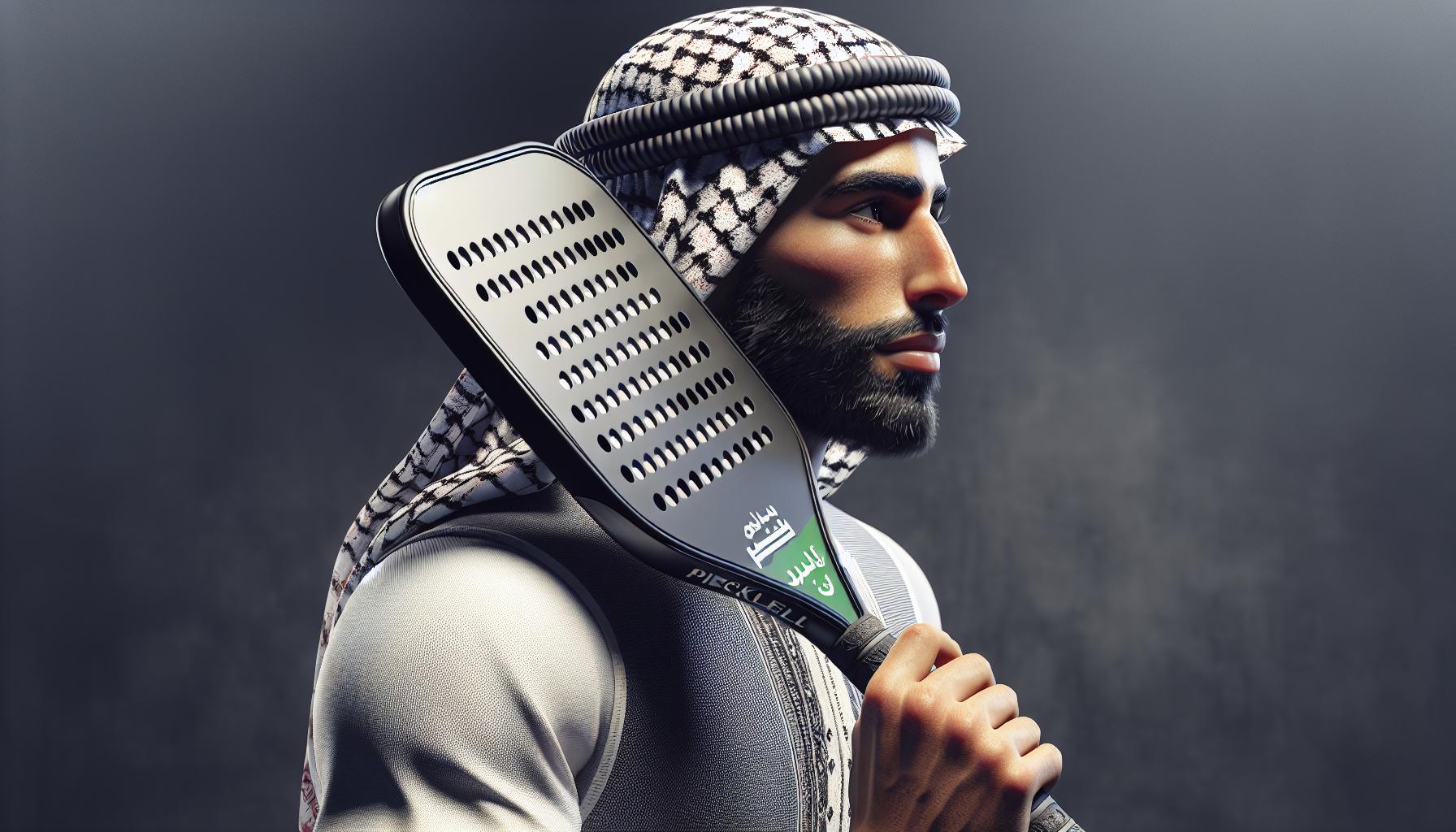
In the high-stakes world of competitive pickleball, building mental resilience and confidence is just as important as mastering the physical aspects of the game. Players often find that their biggest battles are not always on the court but within their own minds. Developing a strong mental game is crucial for overcoming obstacles, handling pressure, and pushing through tough matches.
Mental Resilience: The Backbone of a Strong Mindset
Mental resilience is about the ability to bounce back from setbacks and remain focused and determined in the face of challenges. It’s the inner strength that allows players to keep pushing forward, even when the odds are stacked against them. Building this resilience involves a few key strategies:
- Regular Self-Reflection: Taking time to reflect on performances, both good and bad, helps players understand their strengths and identify areas for improvement. It also aids in recognizing patterns of negative thinking that could be hindering their progress.
- Setting Realistic Goals: Goals should be challenging yet achievable. By setting realistic targets, players can track their progress and gain a sense of accomplishment, which boosts their confidence.
- Embracing Failure: Understanding that failure is a part of the learning process is crucial. Instead of being discouraged by losses, resilient players analyze what went wrong, learn from their mistakes, and use those lessons to improve.
Confidence: The Key to Unlocking Potential
Confidence on the court comes from a belief in one’s skills and abilities. It’s that self-assuredness which propels players to take decisive actions during crucial points in a game. To build this confidence, players can:
- Engage in Positive Self-Talk: Replacing negative thoughts with positive affirmations helps in rewiring the brain to be more confident. Phrases like “I can do this” or “I’ve practiced for this moment” can be powerful motivators.
- Visualize Success: Visualization techniques not only assist in strategizing but also in instilling a sense of confidence. Imagining oneself executing perfect shots or winning points can enhance self-belief.
- Consistent Practice: There’s no substitute for hard work. Regular and focused practice sessions improve skill levels, which in turn, boosts confidence. Knowing you’ve put in the effort makes you more confident in your ability to perform under pressure.
Utilizing Positive Self-Talk and Affirmations
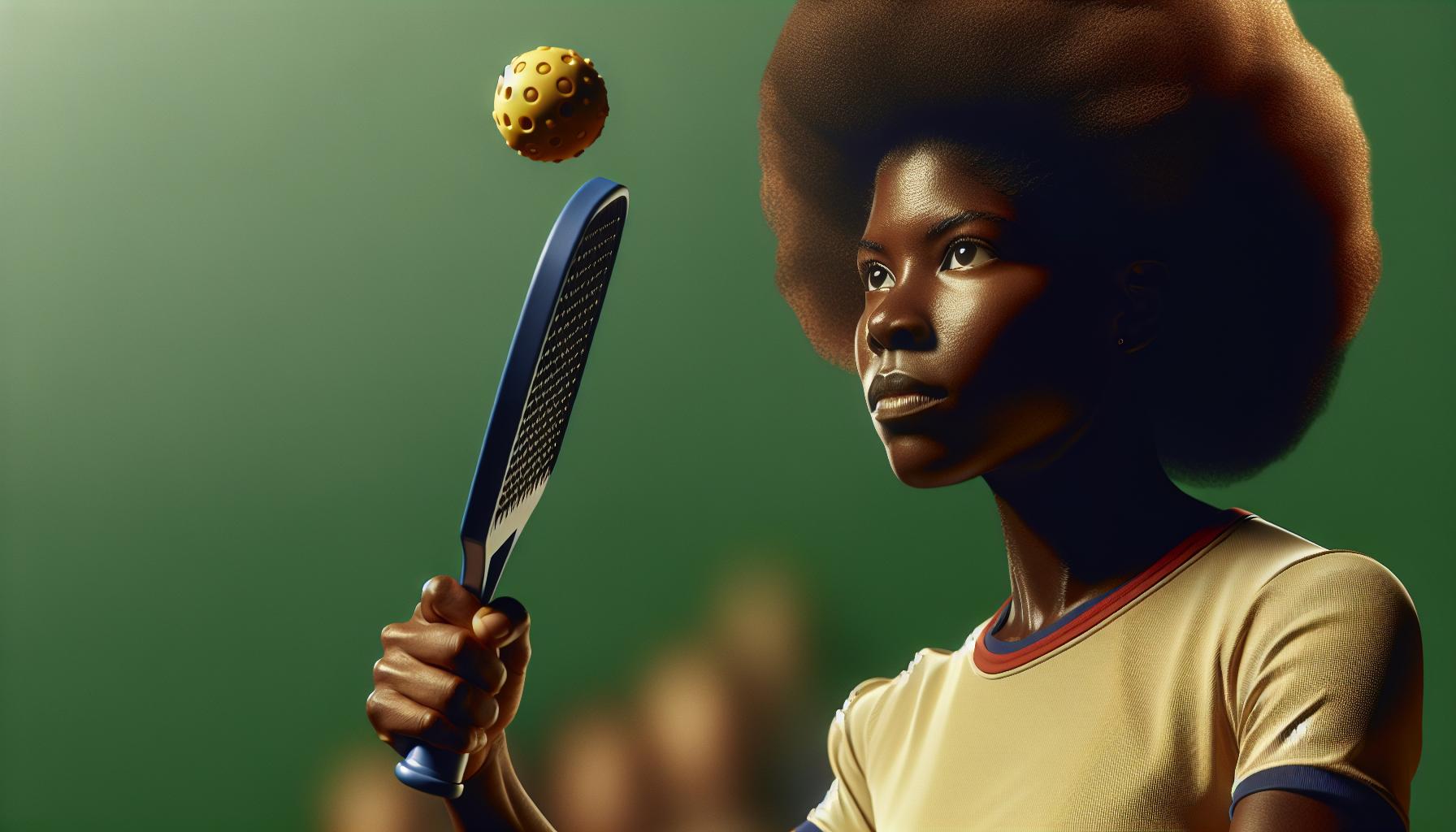
Positive self-talk and affirmations can be powerful tools in the mental game of competitive pickleball. By actively engaging in positive dialogue with oneself, players can foster a mindset that not only supports skill development but also builds the mental fortitude necessary to face the intense pressure of competition. This strategy revolves around the principle that what we tell ourselves on a consistent basis can dramatically influence our beliefs, emotions, and ultimately, our performance on the court.
Affirmations are positive statements that can help shift a player’s focus from doubt and fear to confidence and determination. These statements are most effective when they’re specific, actionable, and grounded in reality. For instance, rather than saying “I will win every match,” a more effective affirmation might be, “I am prepared, focused, and capable of executing my strategy with precision.” Such affirmations encourage a growth mindset, reinforcing the belief that through hard work and persistence, improvement and success are within reach.
Incorporating positive self-talk into one’s routine involves first becoming aware of negative dialogue patterns. It’s common for athletes to engage in harsh self-criticism, especially after errors or losses. However, by recognizing these patterns, players have the opportunity to redirect their thoughts into more constructive channels. Instead of dwelling on a missed shot by thinking, “I can’t believe I missed that,” they can shift their perspective by considering, “What can I learn from that shot, and how can I adjust my approach next time?”
Strategies for Integrating Positive Self-Talk and Affirmations
To make positive self-talk and affirmations a consistent part of one’s mental toolkit, players can employ several strategies:
- Daily Affirmation Practice: Set aside a few minutes each day to recite affirmations. This can be done in the morning to set a positive tone for the day or before a match to foster a confident mindset.
- Journaling: Writing down affirmations or instances of positive self-talk can reinforce these messages. Keeping a log also allows players to track their progress and identify areas needing more focus.
- Mindfulness and Meditation: Incorporating mindfulness practices helps in cultivating an awareness of the present moment, making it easier to notice negative self-talk and replace it with positive affirmations.
Analyzing and Learning from Past Performances

A pivotal yet often overlooked aspect of a player’s mental preparation strategy is the analysis of past performances. It’s not just about recalling the scores but rather delving deep into the hows and whys of each game. This deeper understanding helps in identifying patterns, strengths, weaknesses, and the impact of mental states on performance.
Analyzing past performances begins with self-reflection. Players are encouraged to ask themselves critical questions about their games. What strategies were successful? Where did they struggle? How did they feel emotionally during critical moments? Such introspection can highlight areas for improvement and reinforce effective strategies.
Video Analysis plays a critical role in this process. By watching recordings of their games, players can observe their reactions under pressure, body language, and execution of skills. This visual feedback is invaluable, offering a perspective that is often missed in the heat of the moment.
Incorporating a Coach or Mentor’s Feedback is equally vital. A coach can provide an objective analysis of a player’s performance, offering insights that the player might overlook. This feedback can cover technical skills, strategic decisions, and mental approach, providing a comprehensive view of areas that need attention.
The Importance of Detailed Journaling
To facilitate ongoing analysis and learning, maintaining a detailed performance journal is a crucial strategy. In it, players can record:
- Specific Observations: Noting down critical moments of each match, strategies employed, and their outcomes.
- Emotional Responses: Tracking how emotions influenced performance and decision-making during the game.
- Improvement Plans: Based on the analysis, setting actionable goals for practice and future matches.
This journal becomes a personal playbook, offering personalized insights into what works and what doesn’t. It’s a tool for growth, allowing players to chart their progress over time and adjust their training and mental preparation strategies accordingly.
Setting Actionable Goals Based on Analysis
The culmination of analyzing past performances is the setting of clear, actionable goals. These should be SMART: Specific, Measurable, Achievable, Relevant, and Time-bound. Goals could range from improving specific technical skills, enhancing emotional control under pressure, to implementing new strategies in challenging situations.
Conclusion
Embracing the mental game in competitive pickleball isn’t just an option; it’s a necessity. By integrating strategies like visualization, mindfulness, and positive self-talk into their routines, players can significantly enhance their performance on the court. It’s about more than just physical prowess; it’s about cultivating a mindset that’s resilient, focused, and ready to face any challenge. Remember, every point in a game is a new opportunity to apply these strategies and grow. So, whether you’re just starting out or looking to elevate your game, focusing on your mental preparation can lead you to not only become a better player but also enjoy the sport more deeply. Let’s step onto the court with confidence, knowing we’re prepared for whatever comes our way.











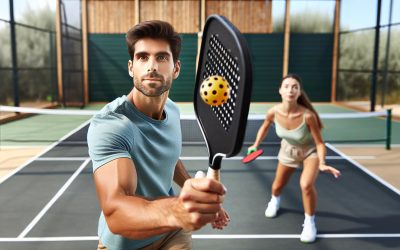
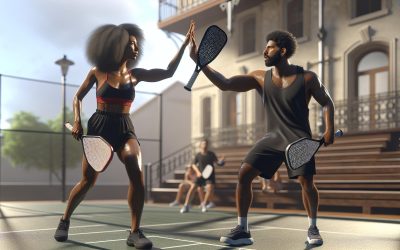

0 Comments